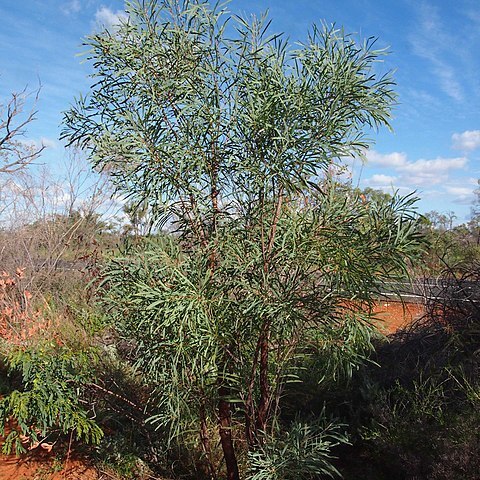Slightly resinous shrub or tree, 1.3–15 m high. Bark flaky when old. Branchlets angled towards apices, soon terete, glabrous. Phyllodes linear to very narrowly elliptic, 5–20 cm long, 4–18 mm wide, thinly to moderately coriaceous, yellowish green (at least when dry), scurfy when mature; veins 10–13 per mm, nonanastomosing, with prominent midvein and 1 or 2 semiprominent veins; gland 1, to 2 mm above pulvinus. Spikes 1–4 cm long. Flowers 5-merous; calyx 0.5–0.8 mm long, free almost to base, with hyaline hairs; corolla 0.8–1.3 mm long, dissected to ½, glabrous; ovary densely pubescent. Pods linear, strongly moniliform, convex over seeds, 6–20 cm long, (3–) 4–6.5 mm wide, longitudinally vein-ridged, glabrous. Seeds longitudinal, ± elliptic, 4.4–6.5 mm long, dark brown; areole narrowly oblong, open, slightly raised within a central depression, often paler than rest of seed.


